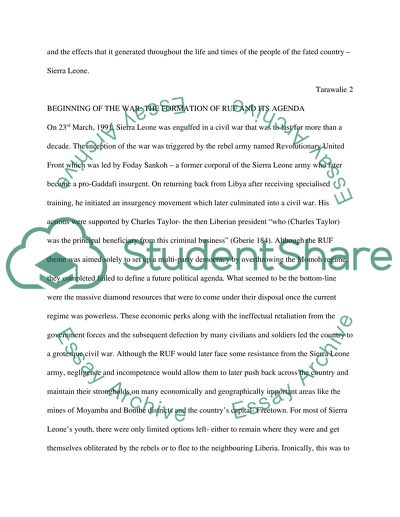Cite this document
(“The Sierra Leone Civil War (Methods used by the RUF whether effective Research Paper”, n.d.)
Retrieved from https://studentshare.org/family-consumer-science/1419912-the-sierra-leone-civil-war-methods-used-by-the-ruf
Retrieved from https://studentshare.org/family-consumer-science/1419912-the-sierra-leone-civil-war-methods-used-by-the-ruf
(The Sierra Leone Civil War (Methods Used by the RUF Whether Effective Research Paper)
https://studentshare.org/family-consumer-science/1419912-the-sierra-leone-civil-war-methods-used-by-the-ruf.
https://studentshare.org/family-consumer-science/1419912-the-sierra-leone-civil-war-methods-used-by-the-ruf.
“The Sierra Leone Civil War (Methods Used by the RUF Whether Effective Research Paper”, n.d. https://studentshare.org/family-consumer-science/1419912-the-sierra-leone-civil-war-methods-used-by-the-ruf.


